You can contact LEARNZ, part of CORE Education, at:
Postal Address:
PO Box 13 678,
Christchurch 8141,
New Zealand
Kia ora koutou
The ambassadors and I had a bit of a journey today. It started at Riccarton Bush, then continued north to Tūhaitara Coastal Park in Woodend. The journey finished at Tiromoana Bush near Kate Valley.
Web conference
Our first web conference took place at Riccarton House. Our expert was David Norton. Riccarton House was the homestead built for Canterbury’s pioneering Deans family. This grand old building is fully restored. As I looked around it was like taking a step back in time. Our expert David Norton is one of the Riccarton House Board of Trustees, so he was able to book a room for us to have this morning’s web conference.
There was no formal speaking school for this morning’s session. But there were still plenty of good questions and some informative conversation. You can listen to the recorded version by clicking the link on the web conferences page.
Riccarton Bush
Next to Riccarton House is Riccarton Bush/Pūtaringamotu. The 7.8-hectare native bush remnant was gifted to the people in Canterbury in 1914. It is now the only area of podocarp forest remaining in Christchurch. The dense stands of old kahikatea with their massive buttressed trunks are one of the standout features of Riccarton Bush. So too is the birdsong. The area is fully predator proof fenced to allow native wildlife to flourish.
It was in the middle of Riccarton Bush that the ambassadors and I sat with David Norton on one of the tangled, exposed root systems of a kahikatea. It was a good place to talk about the importance of having these sorts of forest areas. They are nice places to visit, are good for education, are homes for native wildlife, and provide examples of what to work towards for restoration projects such as Tiromoana Bush.
Tūhaitara Coastal Park
From Riccarton Bush we headed north towards Woodend. Out at Woodend Beach we met up with Greg Byrnes at Tūhaitara Coastal Park. Tūhaitara is a well-established restoration project. There is a long-term plan to rehabilitate the lands to an indigenous coastal ecosystem. This ecosystem will support a diverse range of native flora and fauna species and provide sustainable mahinga kai.
The great thing about Tūhaitara is their community involvement. Today we met with a group of Woodend School students who were monitoring one of the many ‘biota nodes’. These biota nodes are a series of small, localised points of native wildlife. Each node contains a freshwater pond and native plant life. The plants attract birds, aiding seed transfer for easy and eventual self-maintaining propagation.
Each Node is adopted and maintained by a school, class or community group. Kowaro/Canterbury Mudfish have also been released into some of the nodes. You will see in the videos from today how the biota node system works. It was a truly inspiring place to visit, and a great example of getting community members involved in ecological restoration.
Tiromoana Bush
After our visit to Tūhaitara Coastal Park, we made our way to Tiromoana Bush. Here we spoke with Rangi Lord, Kate Valley Landfill General Manager. Rangi talked about how Transwaste Canterbury set aside this area of land for restoration during the establishment of the landfill. A lot has happened since then, and now David Norton leads the restoration project.
Over the next two days we will explore Tiromoana Bush with David and find out what it takes to restore an area such as this. It looks like the weather is going to be good – I’m looking forward to discovering more about this coastal forest ecosystem.
Talk tomorrow,
Andrew
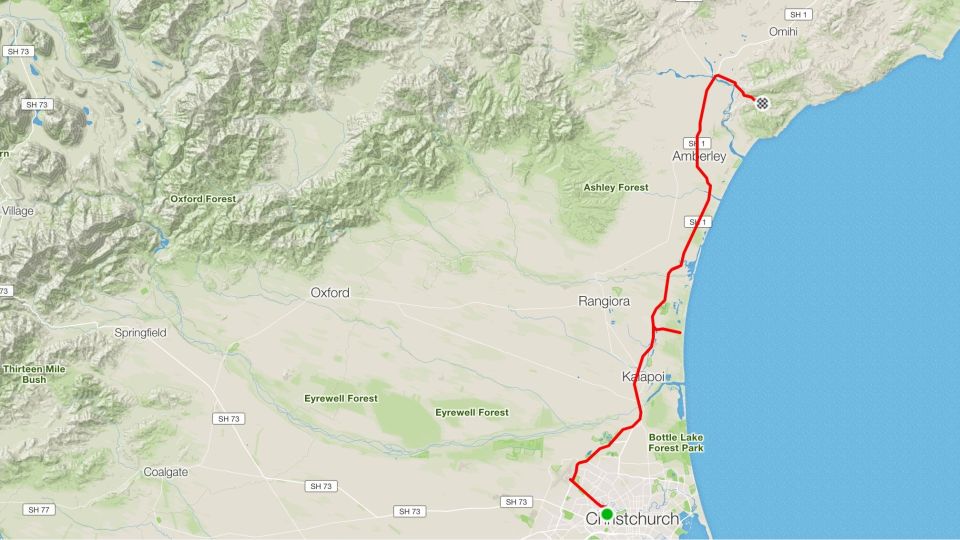
Map of today's travel route. Image: LEARNZ.
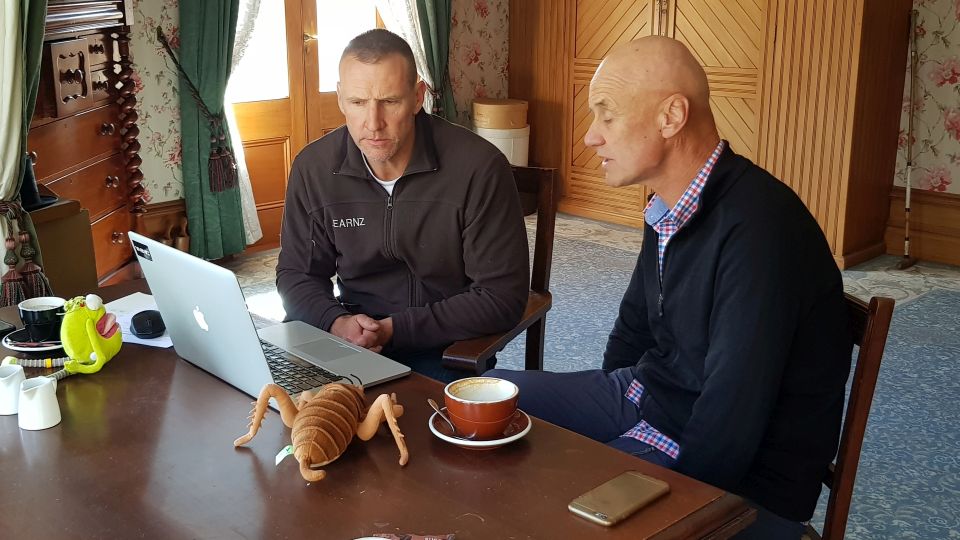
Andrew and the ambassadors listen to David Norton on this morning's web conference. Image: LEARNZ.
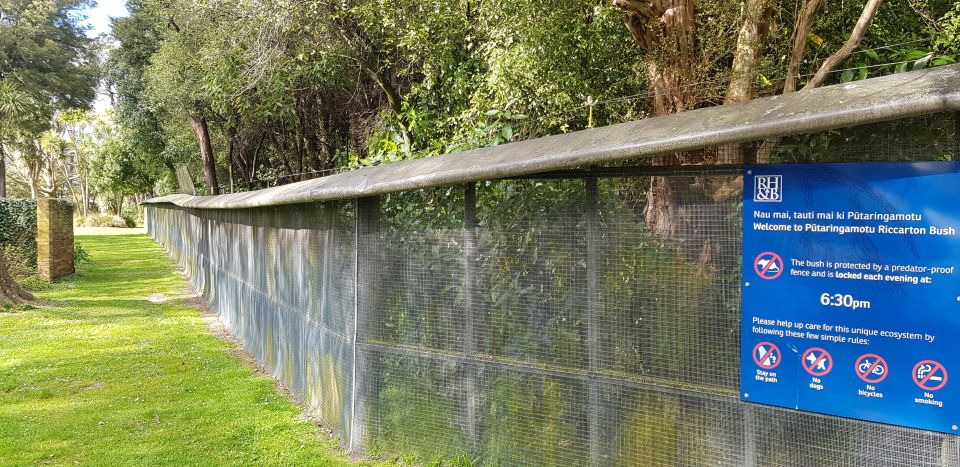
The predator proof fence at Riccarton Bush. How might predators still get over the fence? Image: LEARNZ.
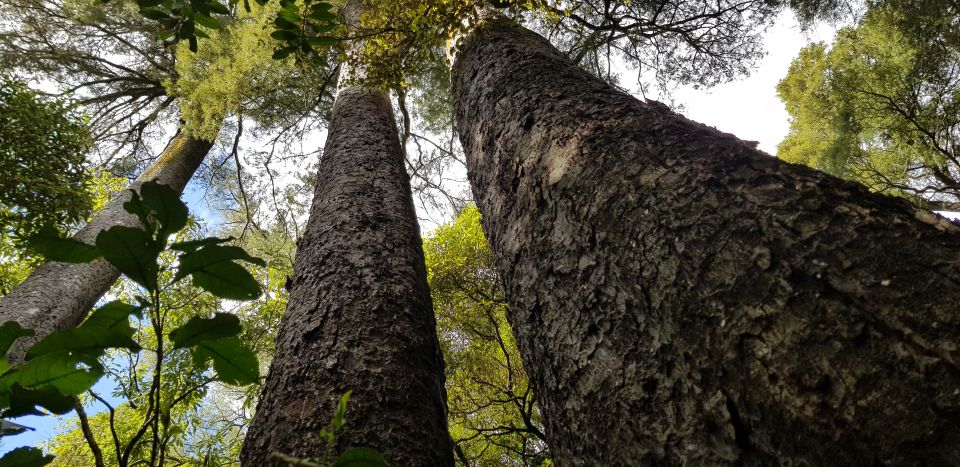
Looking up at New Zealand's tallest tree, the kahikatea, at Riccarton Bush. Image: LEARNZ.
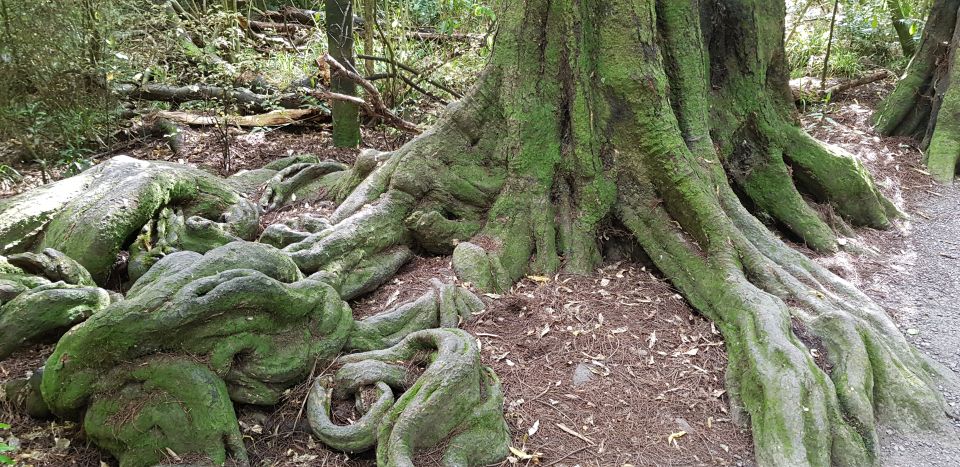
An impressive tangle of roots at the base of an old kahikatea in Riccarton Bush. Image: LEARNZ.
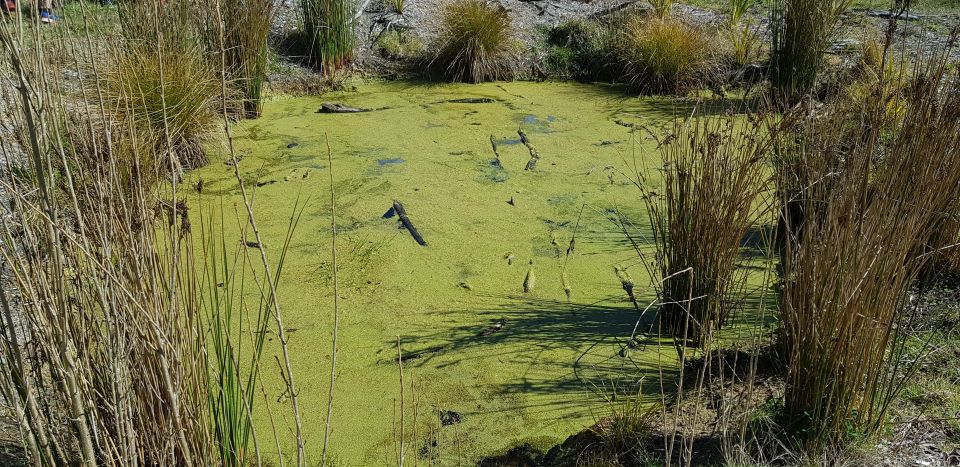
Looking at one of the biota nodes at Tūhaitara Coastal Park. The green on top is a native aquatic plant. How might this plant be helpful? Image: LEARNZ.
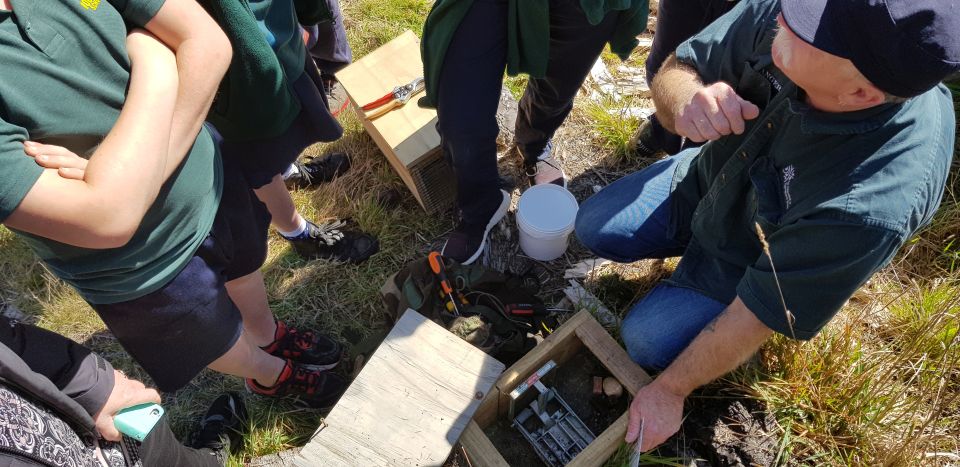
One of the tasks for today's biota node monitoring was checking and resetting predator traps. Image: LEARNZ.
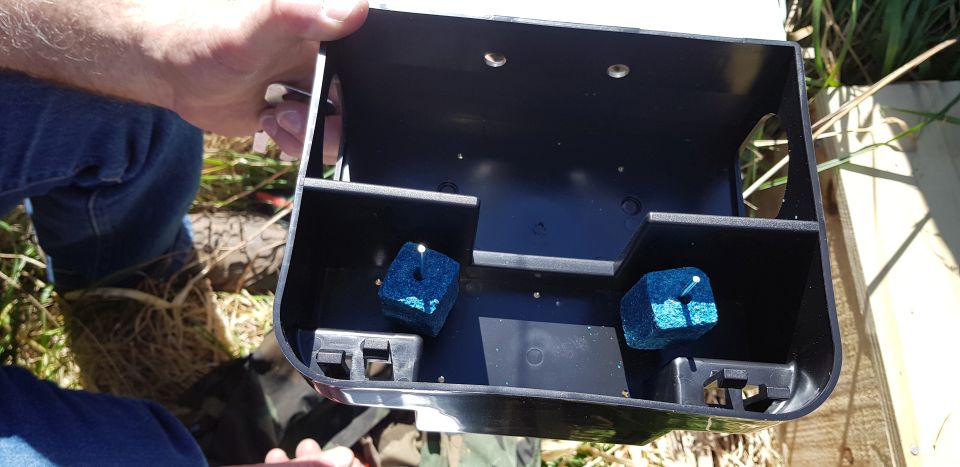
Placing rodent bait stations around the biota node was another task for the Woodend students. Image: LEARNZ.
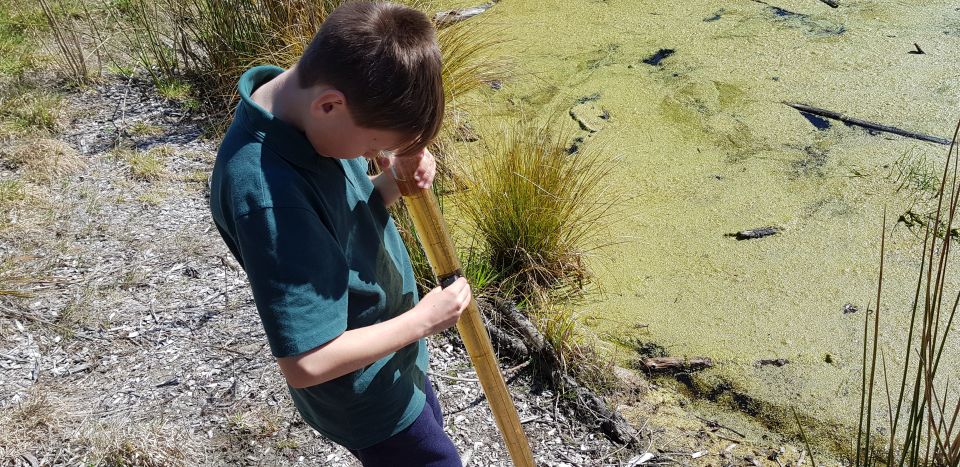
A Woodend student checks water clarity from the biota node pond. It is best if the water is not completely clear. Why do you think this is? Image: LEARNZ.
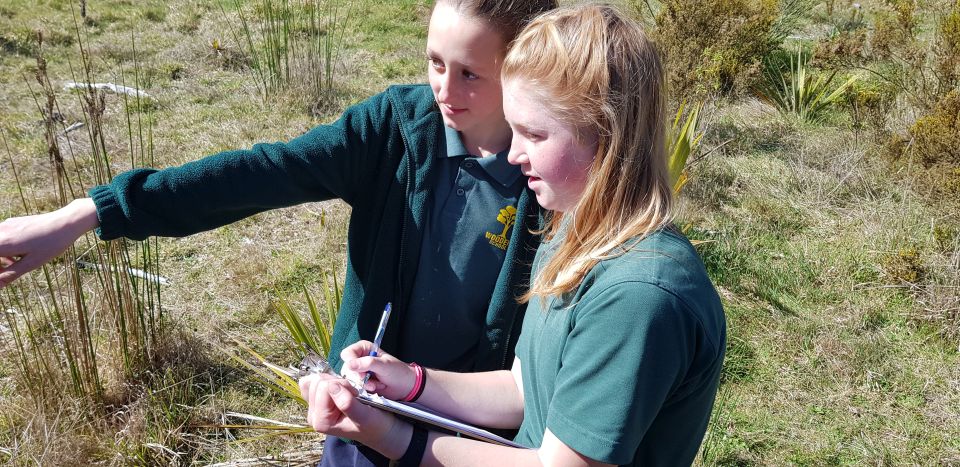
Woodend students record observations around the biota node. What sorts of things do you think they are looking for? Image: LEARNZ.
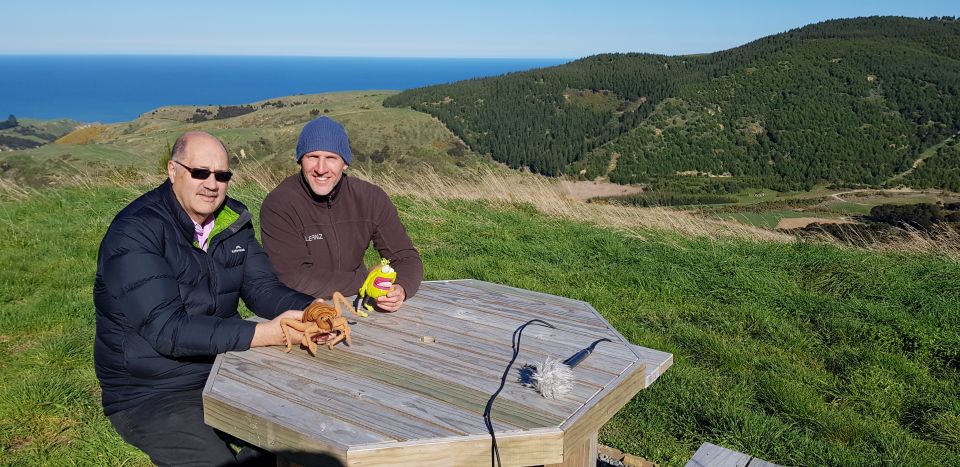
Andrew and the ambassadors with Rangi Lord at 'Barbara's Lookout' at Tiromoana Bush. Image: LEARNZ.